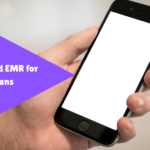The healthcare industry is undergoing rapid digital transformation, and at the heart of this shift is the implementation of an EHR (Electronic Health Record) system. Whether you’re a small clinic, a multispecialty hospital, or a healthcare startup, integrating EHR software is essential for delivering modern, efficient, and patient-centered care.
But the path to a fully functioning EHR isn’t just about installing software—it’s about careful planning, training, change management, and data integrity.
In this comprehensive guide, we walk you through everything you need to know about EHR implementation: from planning to execution, key challenges, benefits, and best practices.
Ready to take the first step?
We’ll assist you through every step.

1. What is the Implementation of an EHR?
EHR implementation refers to the process of planning, configuring, deploying, and integrating Electronic Health Records software into a healthcare organization. It involves several stages, including:
- Selecting the right software
- Customizing it to fit workflows
- Migrating existing data
- Training staff
- Ensuring compliance and security
Unlike generic software rollouts, EHR implementation deals with sensitive patient data and affects all areas of a healthcare facility, from the front desk to labs to physicians.
2. Why is EHR Implementation Important?

Implementing an EHR system is no longer a luxury; it’s a necessity for modern healthcare. Here’s why:
a. Improved Patient Care
EHRs provide real-time, accurate, and complete patient information, leading to better clinical decisions.
b. Operational Efficiency
Automation reduces paperwork, saves time, and streamlines administrative tasks.
c. Regulatory Compliance
Governments and health authorities worldwide are mandating digital health records. In India, initiatives like the Ayushman Bharat Digital Mission (ABDM) emphasize digital health adoption.
d. Data Analytics
Digitized records enable tracking of disease trends, patient behavior, and treatment outcomes.
3. Key Steps in the EHR Implementation Process
Implementing EHR software is a multi-stage process. Here’s a breakdown of the typical EHR implementation steps:
Step 1: Needs Assessment
- Evaluate your clinic/hospital’s current workflow.
- Identify goals: faster diagnosis, fewer errors, improved billing, etc.
- Define the scope—department-wide or organization-wide?
Step 2: Choose the Right EHR Software
Select a system that fits your specialty, size, and budget (more on this below).
Step 3: Assemble an Implementation Team
Include:
- Project Manager
- IT experts
- Doctors/nurses
- Admin staff
- Vendor representatives
Step 4: Develop a Project Plan
Define timelines, milestones, budget, roles, and communication strategy.
Step 5: Customize the EHR System
Configure templates, workflows, user permissions, and integrations (lab, pharmacy, billing).
Step 6: Data Migration
- Digitize and import patient records from existing systems.
- Validate and clean data before transfer.
Step 7: Training & Onboarding
Conduct structured training for all users:
- How to log in
- Enter patient details
- Access lab results
- Generate prescriptions
Step 8: Go Live
Start with a pilot (single department) before full-scale rollout. Ensure support is available for troubleshooting.
Step 9: Post-Implementation Support
Monitor usage, gather feedback, and provide ongoing technical support.
4. Choosing the Right EHR Software
The success of your EHR implementation heavily depends on the software you choose.
Features to Look For:
- Easy-to-use interface
- Customizable templates (e.g., for pediatric care, dermatology, etc.)
- Cloud-based access
- Mobile compatibility
- Data security (encryption, access control)
- Lab and pharmacy integration
- Telemedicine support
- Patient portal access
Indian EHR Vendors to Consider:
- Kiddoklinik – Designed for pediatric clinics.
- Practo Ray – Offers EHR with practice management features.
- HealthPlix – Popular with general practitioners, supports multiple Indian languages.
5. Common Challenges in EHR Implementation
a. Resistance to Change
Doctors and staff may prefer traditional paper-based methods. Overcoming this requires clear communication and training.
b. Data Migration Issues
Poor-quality data, incomplete records, or incompatible formats can hinder a smooth transition.
c. Training Gaps
Without proper training, staff may struggle with new workflows, leading to errors and inefficiencies.
d. Connectivity Issues
In smaller towns or rural areas, internet bandwidth can be a limitation—choose an EHR with offline capability.
e. High Initial Costs
EHR systems can be expensive. However, cloud-based or SaaS models offer more affordable entry points.
f. Compliance Concerns
India’s Digital Personal Data Protection Act (DPDP 2023) and ABDM guidelines must be adhered to.
6. EHR Implementation Best Practices
To avoid pitfalls, follow these best practices:
Get Leadership Buy-In
Ensure doctors and administrators support the project from the beginning.
Involve End Users Early
Doctors, nurses, and receptionists should help customize workflows.
Communicate Clearly
Keep staff informed of timelines, training dates, and expectations.
Train Continuously
One-time training is not enough—offer refresher sessions and quick guides.
Test Before You Launch
Run mock scenarios to identify issues before going live.
Prioritize Data Security
Use strong passwords, two-factor authentication, and encrypted backups.
Monitor Performance
Use analytics to track usage, identify bottlenecks, and improve adoption.
7. Case Study: EHR Implementation in Indian Pediatric Clinics
Let’s consider how KidsCur, a pediatric EHR platform, is revolutionizing child healthcare in India.
The Problem:
Most pediatricians relied on paper records or Excel sheets to manage vaccination schedules, growth charts, and prescriptions. This led to:
- Missed vaccine reminders
- Manual errors
- No centralized access to child health history
The Solution:
KidsCur implemented a cloud-based EHR for pediatric clinics, with features like:
- Automated vaccine reminders for parents
- Digital growth and milestone charts
- Prescription history tracking
- Integration with diagnostic labs and hospitals
The Outcome:
- Pediatricians reduced time spent on manual tasks by 30%
- Parents received SMS/email alerts for vaccinations
- Clinics could access records from any device, at any location
This case shows how specialty-specific EHR systems can drive adoption and improve outcomes.
Conclusion
The implementation of an EHR system is a transformative step for any healthcare organization. While it involves upfront effort and cost, the long-term benefits, in terms of patient care, efficiency, and compliance, far outweigh the challenges.
By following a structured approach, selecting the right software, involving all stakeholders, and ensuring continuous training, your clinic or hospital can successfully transition to digital health records.
Whether you’re a solo practitioner or a large hospital network in India, now is the time to embrace digital healthcare.
Key Takeaways
- EHR implementation is a multi-step process involving planning, customization, training, and post-launch support.
- Choosing the right EHR software is critical to success.
- Common challenges include resistance, data migration, and training gaps, but they can be overcome.
- Specialty-specific tools like KidsCur make adoption easier for niche practices like pediatrics.
For more details, visit the Kiddoklinik site!
FAQs
Q 1. What are the main steps in EHR implementation?
Answer:
The key steps in EHR implementation include needs assessment, choosing the right software, forming an implementation team, customizing workflows, migrating patient data, training staff, going live with the system, and offering ongoing technical support.
Q 2. What challenges do clinics face during EHR implementation?
Answer:
Common challenges include staff resistance, data migration issues, training gaps, internet connectivity problems, and ensuring data security. Choosing a user-friendly and India-compliant EHR system helps overcome these hurdles.
Q 3. Why is EHR implementation important for Indian clinics?
Answer:
EHR implementation in Indian clinics improves patient care, ensures compliance with ABDM and DPDP laws, reduces paperwork, and supports telemedicine. It also helps track patient history, vaccinations, and prescriptions more efficiently.



